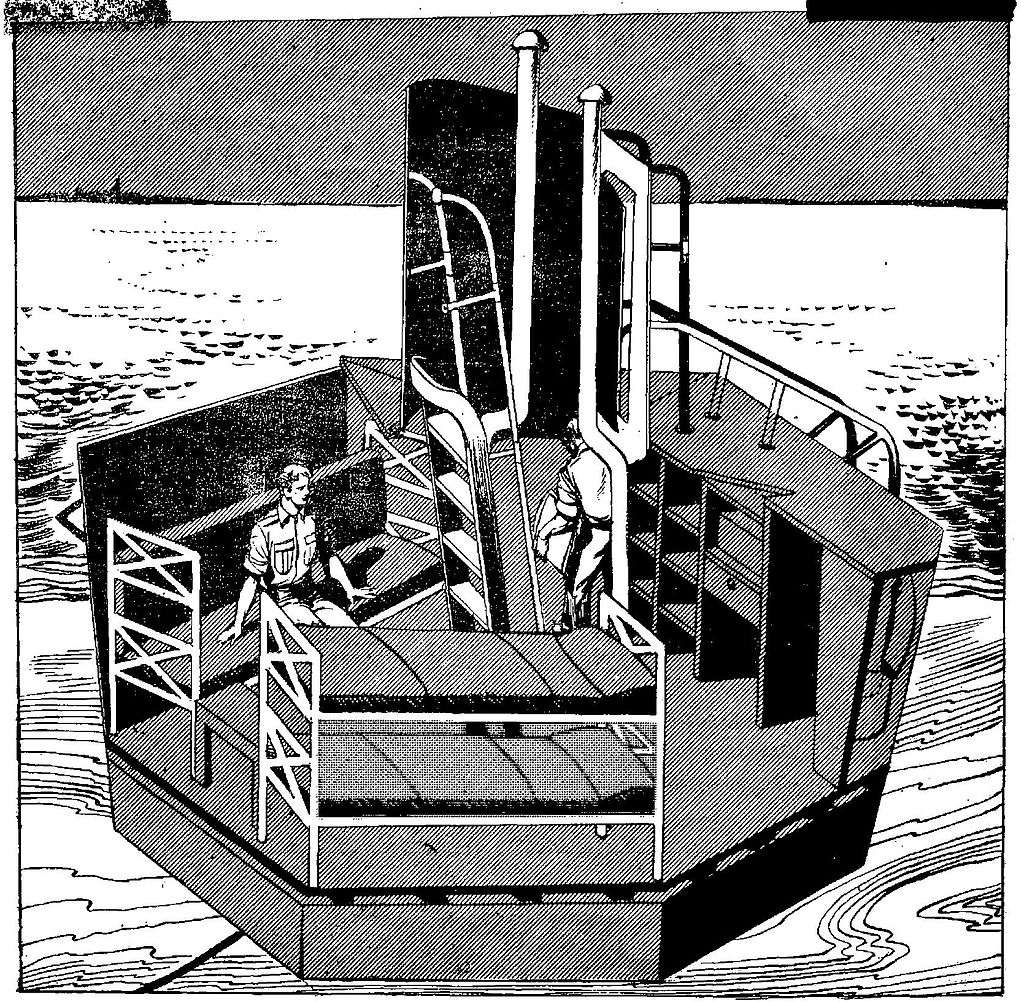During World War II, the German Luftwaffe, or air force, was renowned for its technological innovations, tactical strategies, and fierce determination. Yet, one of its lesser-known contributions to the wartime effort was its deployment of rescue buoys, or “Rettungsboje.”

These devices were strategically placed across stretches of water, offering downed pilots and aircrews a chance at survival
Design Of The Luftwaffe Rescue Buoy
Constructed to withstand the harsh elements of the sea, the Rettungsboje was a buoy-like structure anchored to the sea floor. With a cylindrical shape, they were designed to be easily spotted, even in turbulent waters.
Each buoy had a ladder, offering easy access from the water, and an airtight door that led to a sheltered interior. Inside, there was enough space for up to six people to await rescue.
 An image of a Rescue Buoy at sea.
An image of a Rescue Buoy at sea.
The buoys were stocked with essential supplies, including food, water, first-aid kits, blankets, and a radio for communication.
Most importantly, a flashing beacon on top ensured that the buoy was visible from a distance, especially at night.
Purpose
The main purpose of the Rettungsboje was to provide an immediate sanctuary for pilots and crew members who had been shot down or forced to ditch their aircraft over water.
This was especially critical in regions like the North Sea, where cold temperatures could lead to hypothermia in a matter of minutes.
 The interior of a Rescue Buoy.
The interior of a Rescue Buoy.
Strategically, the buoys were placed in areas where Luftwaffe pilots frequently flew missions. Their locations were mapped and shared with pilots as part of their pre-flight briefing.
By knowing the approximate location of these lifelines, pilots could aim for them if they found themselves in distress over the water.
Legacy Of The Rescue Buoy
The introduction of the Rettungsboje was a practical solution to a pressing problem. Pilots were often trained for air combat, but few had the necessary skills or knowledge to survive for extended periods in open water.
Pilots who took shelter in a buoy could use the radio equipment to communicate their position and arrange for a rescue.
 The British made a similar design called the Air-Sea Rescue Float. Image by Rosser1954 CC BY-SA 3.0
The British made a similar design called the Air-Sea Rescue Float. Image by Rosser1954 CC BY-SA 3.0
While the exact number of lives saved by these buoys is hard to determine, their mere presence offered a psychological boost to pilots.
The knowledge that there was a safe haven waiting for them in case of emergency provided a crucial morale boost.
In the years following the war, the idea of a sea-based refuge found applications in other contexts. Variations of the buoy concept have been used in oil drilling operations and marine research, providing a safe haven during emergencies.